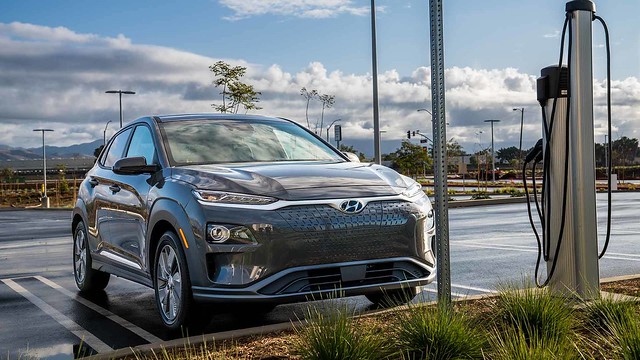For example, the level-two street charger my city installed can provide more capacity than the onboard charger on a Hyundai Kona Electric can use. This means it'd take nearly nine and a half hours to charge from 0% to a full 64 kWh. However, that would happen only in theory. I hope to never see my vehicle with no electrons remaining. Also, I'm likely to only want a maximum charge before an extensive road trip. (Importantly, there is a free, fast charger where we shop for groceries and this should provide an 80% charge during a single visit.)
The recently-released EPA rating puts the Kona at 415 kilometers on a single charge. I opened Google Maps to play with different scenarios. Being able to travel from here to Kelowna, BC or Ellensburg, WA without a half-hour DC-charger stop seemed important. PlugShare shows how easily I could travel across Canada or down to Mexico with stops that would coincide with lunch and pee breaks.
I love that road travel, especially at first, will force me to do a little pre-planning; I like planning things.

2019 Hyundai Kona Electric (EU Specs)
Electric motor
Type Permanent Magnet Synchronous Motor
Maximum Power 150 kW / 204 PS
Maximum Torque 395 Nm
Maximum speed 167 km/h
Battery
Type Lithium-ion Polymer
Capacity (kWh) 64
On Board Charger
Max. capacity (kW) 7.2 (1-phase)
Charging Time
Charge Time / Standard (AC) Approx. 9 hrs 35 min
Charge Time / Quick Charge (DC) (100 kW DC fast charger) Approx. 54 min up to 80% state of charge
Performance
0-to-100 km/h acceleration (sec) 7.6
Efficiency (kWh / 100 km) 14.3
CO2 combined (g/km) 0 g/km
All electric range (WLTP) 482 km
All electric range (NEDC conversion) 546 km
